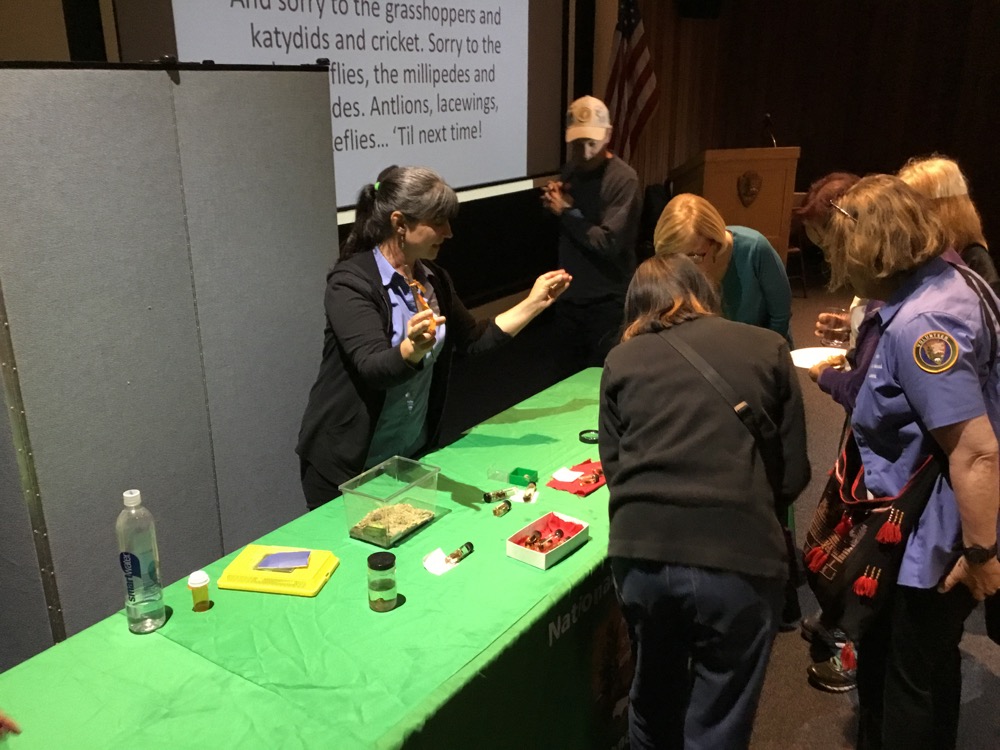 NPS Photo/McKenna Pace: Speaker Patricia Simpson speaks to lecture attendees following her lecture on June 21.
NPS Photo/McKenna Pace: Speaker Patricia Simpson speaks to lecture attendees following her lecture on June 21.Cabrillo National Monument Foundation members and park volunteers recently had the opportunity to learn all about some of these amazing creatures as part of our ongoing Naturally Speaking Science Education Lecture Series. Speaker Patricia Simpson is a volunteer here at Cabrillo as well as at Mission Trails Regional Park. She describes herself as an “amateur naturalist” who enjoys documenting and categorizing biodiversity using the citizen science app iNaturalist (check out some of her observations here). Though she probably could have spoken about insects for hours on end, Patricia specifically highlighted some of Cabrillo’s native species that are often seen around the park. These species include various bee and ant species, the Harlequin Bug, Western Tussock Moth, Silver Argiope, Lady Bird Beetles, and jumping spiders. Use the links above to check out earlier Field Notes for more information on those species.
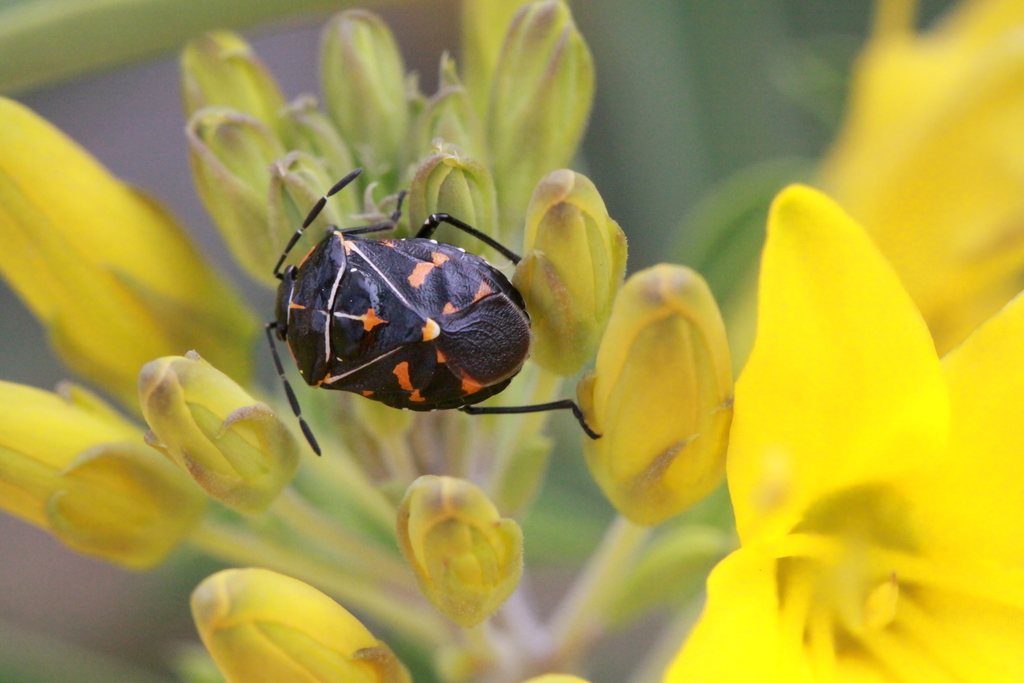 NPS Photo/Patricia Simpson: A Harlequin Bug (Murgantia histrionica).
NPS Photo/Patricia Simpson: A Harlequin Bug (Murgantia histrionica).
NPS Photo/Patricia Simpson: A Western Tussock Moth (Orgyia vetusta) crawls along the Buckwheat.
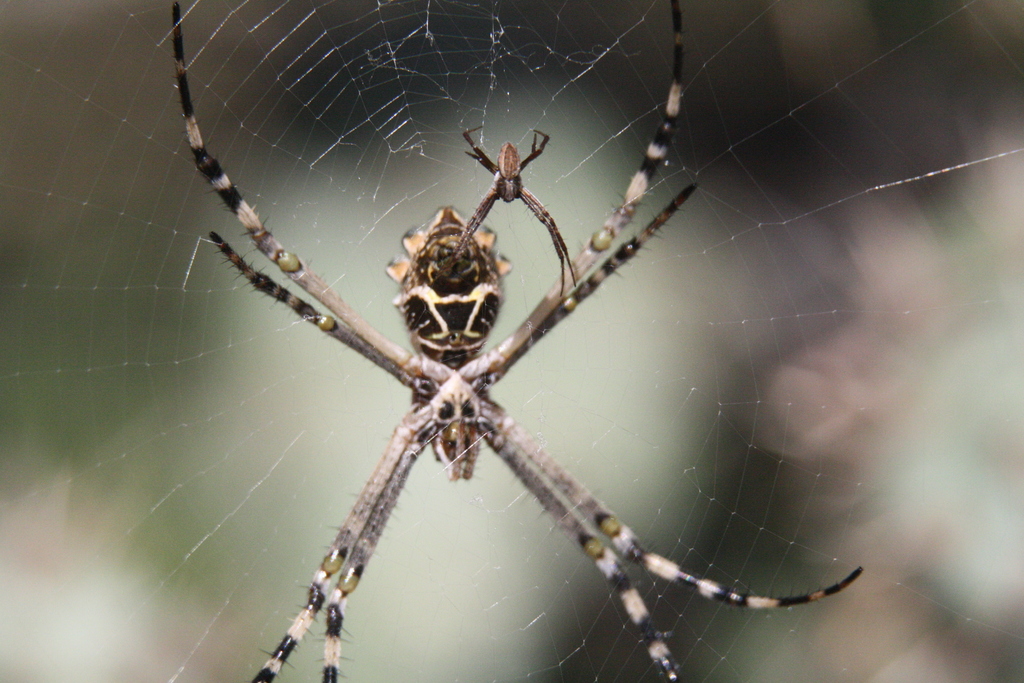 NPS Photo/Patricia Simpson: A large female Silver Argiope spider (Argiope argentata) alongside a smaller male of the same species.
NPS Photo/Patricia Simpson: A large female Silver Argiope spider (Argiope argentata) alongside a smaller male of the same species.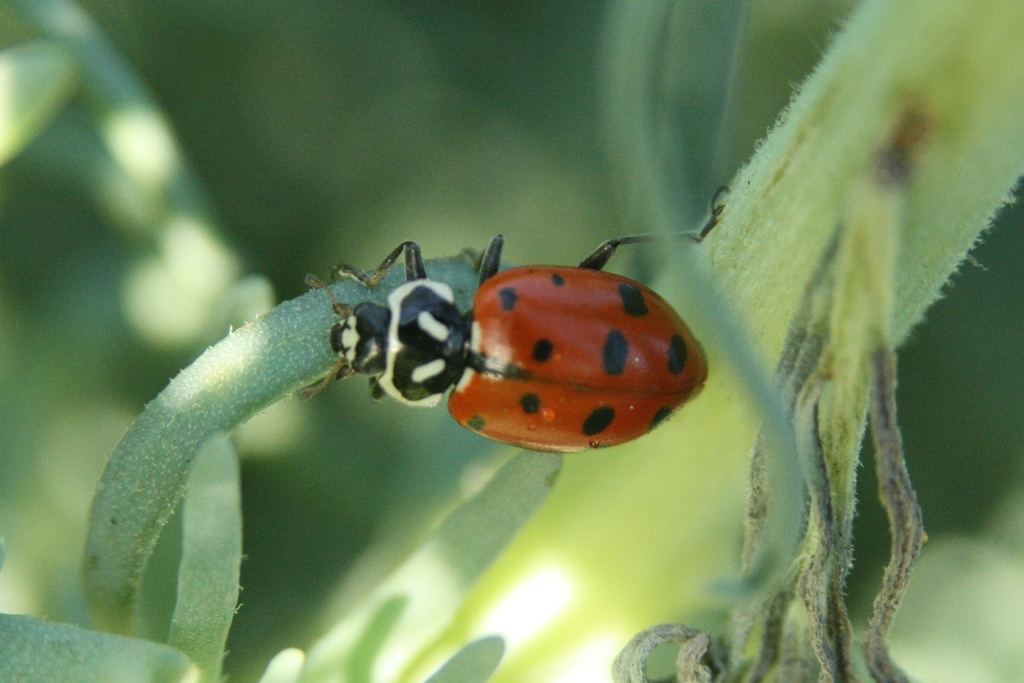 NPS Photo/Patricia Simpson: A Convergent Lady Beetle (Hippodamia convergens), one of two lady beetle species native to Cabrillo National Monument.
NPS Photo/Patricia Simpson: A Convergent Lady Beetle (Hippodamia convergens), one of two lady beetle species native to Cabrillo National Monument.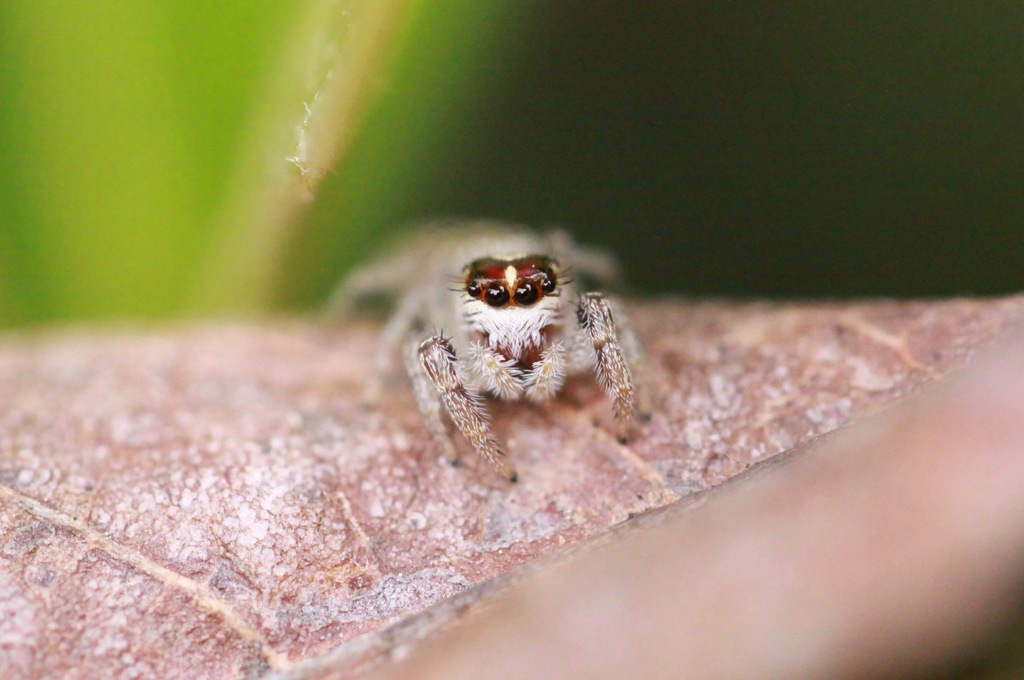 NPS Photo/Patricia Simpson: A native jumping spider (Phanias harfordi).
NPS Photo/Patricia Simpson: A native jumping spider (Phanias harfordi).One misunderstanding that Patricia clarified during her talk is the difference between beetles and true bugs. The first thing to note is that beetles bite while bugs suck, which speaks to their different mouth parts. Additionally, beetles look nothing like their adult counterparts when first born and undergo a complete metamorphosis during their lives. Bugs, however, don’t have an initial pupa stage and look like small adults when they hatch. Probably the easiest way to distinguish the two groups, however, is that beetles have a straight line down their dorsal side where their wings meet, while bug wings cross. This may all sound like scientific jargon, but it’s important! Patricia’s lecture attendees even took an oath that read: “I do solemnly swear that from now on I will not call all insects BUGS and call ‘lady-bugs’ by their proper name LADY BIRD BEETLES.”
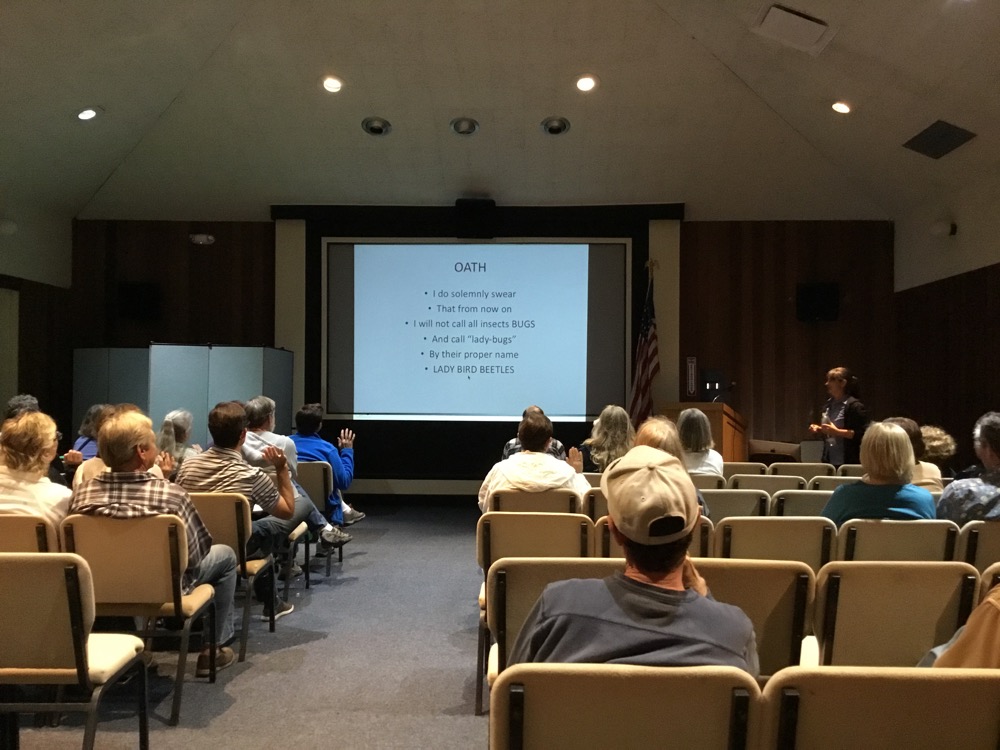 NPS Photo/McKenna Pace: Lecture attendees take the oath to no longer call all insects “bugs” or use the misnomer “lady bug.”
NPS Photo/McKenna Pace: Lecture attendees take the oath to no longer call all insects “bugs” or use the misnomer “lady bug.”So, the next time you come across a creepy crawly in your backyard, don’t be scared or grossed out! Just try to identify whether it’s a beetle or a true bug. And don’t forget to take a picture for iNaturalist!
*A special thank-you to Volunteer Patricia Simpson for her captivating lecture on June 21. If you would like to become a Foundation member and attend future members-only events, visit the CNMF website at: https://cnmf.org/shop/membership/
**Our next Naturally Speaking lecture, entitled Of Islands and Reptiles – Life of the Southern Pacific Rattlesnake, will feature SDSU graduate student Roman Nava and highlight his ongoing research to further our understanding of rattlesnake behavior. The event will be held Thursday, July 19 from 6-8 pm in the Cabrillo National Monument Auditorium. RSVP to this CNMF members-only event here: https://docs.google.com/forms/d/e/1FAIpQLSfIThLgmG1lMDHS4V2K4tKVrUW0qH0wR48HPmv3BPu4TYOf6g/viewform
